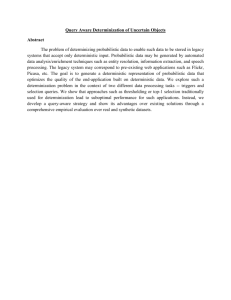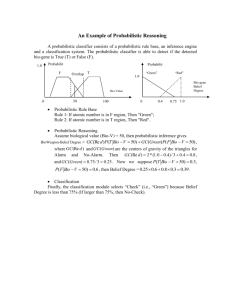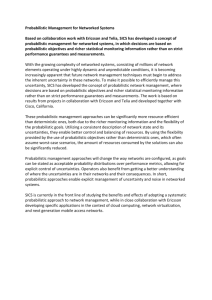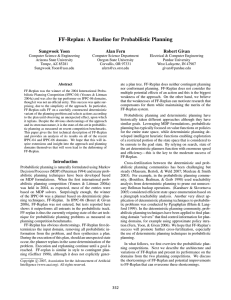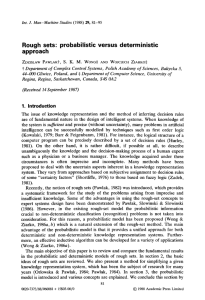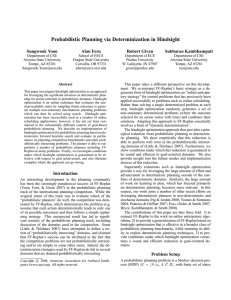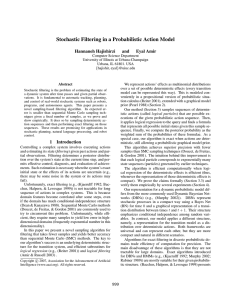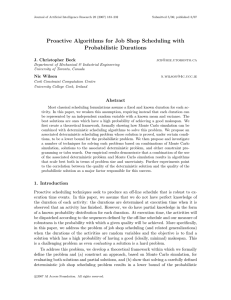- C5. DEFINITIVE COURSE DOCUMENT AND COURSE FILE
advertisement
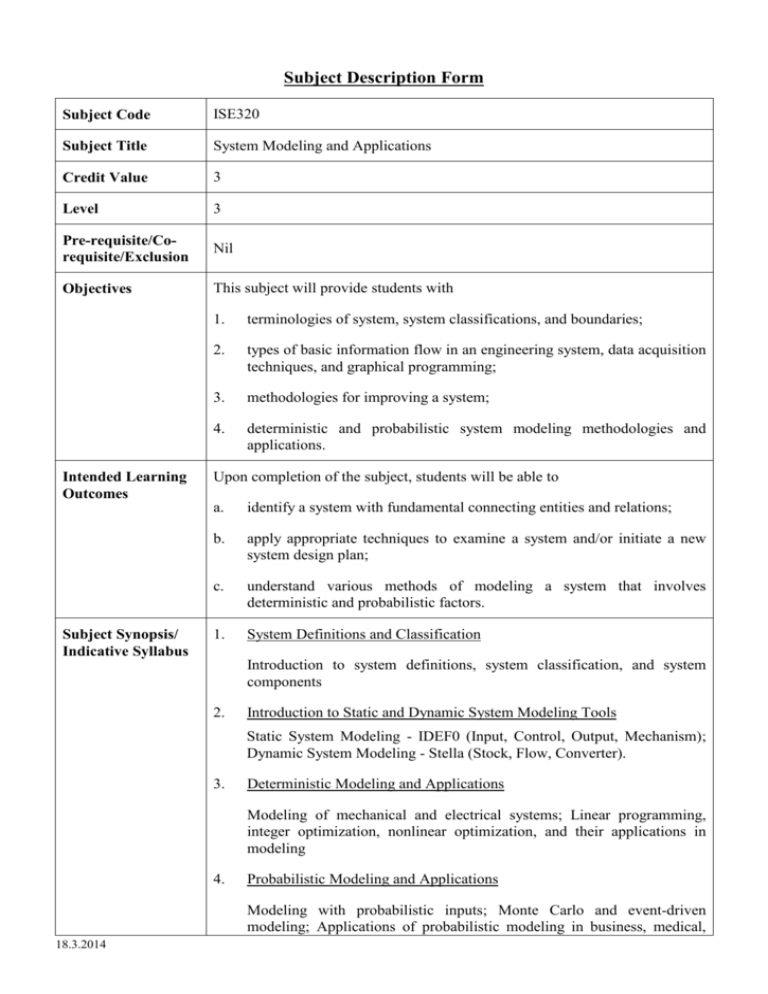
Subject Description Form Subject Code ISE320 Subject Title System Modeling and Applications Credit Value 3 Level 3 Pre-requisite/Corequisite/Exclusion Nil Objectives This subject will provide students with Intended Learning Outcomes Subject Synopsis/ Indicative Syllabus 1. terminologies of system, system classifications, and boundaries; 2. types of basic information flow in an engineering system, data acquisition techniques, and graphical programming; 3. methodologies for improving a system; 4. deterministic and probabilistic system modeling methodologies and applications. Upon completion of the subject, students will be able to a. identify a system with fundamental connecting entities and relations; b. apply appropriate techniques to examine a system and/or initiate a new system design plan; c. understand various methods of modeling a system that involves deterministic and probabilistic factors. 1. System Definitions and Classification Introduction to system definitions, system classification, and system components 2. Introduction to Static and Dynamic System Modeling Tools Static System Modeling - IDEF0 (Input, Control, Output, Mechanism); Dynamic System Modeling - Stella (Stock, Flow, Converter). 3. Deterministic Modeling and Applications Modeling of mechanical and electrical systems; Linear programming, integer optimization, nonlinear optimization, and their applications in modeling 4. Probabilistic Modeling and Applications Modeling with probabilistic inputs; Monte Carlo and event-driven modeling; Applications of probabilistic modeling in business, medical, 18.3.2014 manufacturing, and information systems Teaching/Learning Methodology The emphasis of this subject is on innovation and systematic application aspects. Thus, an interactive approach is adopted to facilitate learning through intensive laboratory exercises. Generally, the design of each laboratory contains two main sections. The first section guides students through step-bystep instructions while the second requires students to make use of the knowledge learned from the former section to perform a specific task with only the provision of key technical details. Innovative thinking on improving system activities is animated. Software packages such as Visio, Stella, LabVIEW, and Visual Basic are used for problem solving. Assessment Methods in Alignment with Intended Learning Outcomes Specific assessment methods/tasks % weighting Intended subject learning outcomes to be assessed a b c 1. Individual lab report 40% 2. Group lab report 30% 3. Test 30% Total 100% The individual lab report assesses if students can identify a system with connecting entities and relations. It also assesses if they can examine a system and initiate a new system design plan and whether they can apply deterministic and probabilistic modeling methods in real case studies. The group lab report evaluates if students can identify a system with connecting entities and relations. It can also assess if they can examine a system and initiate a new system design plan and whether they can apply deterministic and probabilistic modeling methods in real case studies. The test assesses if students can identify a system with connecting entities and relations, and if they can examine a system and initiate a new system design plan. Likewise, the test assesses if students understand deterministic and probabilistic modeling methods and use them to solve real problems. The test assesses if the students have learned how to analyze a simple system in a limited time. Student Study Effort Expected Class contact: Lecture/Tutorial/Test 2 hours/week for 9 weeks 18 Hrs. Laboratory/Case Study 3 hours/week for 7 weeks 21 Hrs. Other student study effort: 18.3.2014 Individual lab reports 53 Hrs. Test preparation Total student study effort Reading List and References 18.3.2014 20 Hrs. 112 Hrs. 1. Hughes, M 2000, Mastering Systems Analysis and Design, Macmillan Press Ltd. 2. Palm, W J 1999, Modeling, Analysis, and Control of Dynamic Systems, New York: Wiley 3. Kulkarni V G 1999, Modeling, Analysis, Design, and Control of Stochastic Systems, New York: Springer 4. Ghosh, S and Lee S 2000, Modeling and Asynchronous Distributed Simulation: Analyzing Ccomplex Systems, New York: IEEE Press 5. Evans, J R and Olson, D L 2002, Introduction to Simulation and Risk Analysis, Prentice Hall, New Jersey


